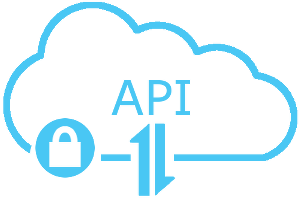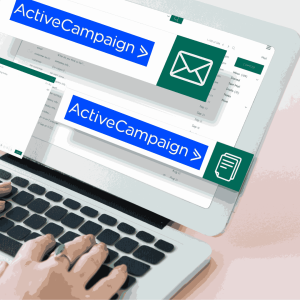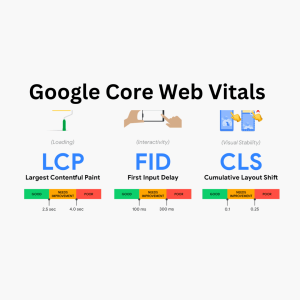Welcome to our API journey! At the heart of today’s digital world lies a powerful tool called Application Programming Interfaces (APIs) – your key to unlocking seamless connectivity between apps and systems. Learn what are API’s and its benefits?
Curious about how your favorite apps seamlessly interact? That’s the magic of APIs! And we’re here to demystify it all for you.
Join us as we explore the world of APIs, from the basics to practical applications. Whether you’re a tech enthusiast or a business owner looking to streamline operations, we’ve got insights to share.
Get ready to dive into the world of APIs with us. Let’s optimize your digital presence, one connection at a time!
What is an API?
API stands for Application Programming Interface. An API is a software intermediary that allows two applications to talk to each other. In other words, an API is the messenger that delivers your request to the provider that you’re requesting it from and then delivers the response back to you. APIs Are Like User Interfaces–Just With Different Users in Mind” we introduced the idea that an application user interface, or API, is an interface for software. APIs are used by software applications in much the same way that interfaces for apps and other software are used by humans.
What are its benefits?
Imagine what life might be like without such a standard. For example, with no plug, matching socket or standard particulars (often called specifications), we might have to hard-wire appliances into the walls of buildings. This would involve gathering the required tools, unsheathing all the wires and splicing the wires together. Of course, we would also need to know something about the wires coming out of the wall. Moving an appliance from one location to another would be a major undertaking in disconnection and re connection.
Luckily, we don’t have to do any of this. We have plugs and sockets that conform to a standard, which affords the following “conveniences”:
Benefits of Standardization in Electrical Interfaces
Simplified Electrical Connection
Through the standard interface, any compatible consumer (in this case, a device) can easily outsource its electrical requirements to the service, and the device can expect to get the same results. Knowing that electricity can be outsourced through a predictably available standard interface, device manufacturers can focus on making great devices and not on figuring out how those devices are going to get their power (other than supporting the standard interface).
Mobility and Flexibility
Consuming-devices are easily moved from one socket to another. Thanks to a standard interface, moving a hair dryer from a home in Boston to a hotel in San Francisco is no different than moving it from your bedroom to your kitchen. And even if the pattern of the standard interface changes—as it does when traveling from North America to the United Kingdom–consuming devices can be easily adapted.
Abstraction and Transparency
The electrical socket interface is a layer of abstraction (it hides the specifics) to the underlying service. The consumer (again, not a person but rather a device) is blind to things like the color of the wiring in the walls, other devices the wiring is shared with, how the electricity is generated (whether it be from a wind farm, nuclear plant, coal-fired generator or solar array) or where those sources of power are located. For whatever motivations (such as cost savings, policy or public pressure), so long as the service delivers 120 volts of 60Hz AC power to the wall socket in a way that conforms to the standard, the service provider is free to change anything and everything from just behind the socket all the way to the source of power. Any such changes are transparent to consuming devices.
The same transparency works both ways. To the service, all consumers look the same. It is essentially blind to the specifics of the consuming device that’s on the other side of the electrical socket.
As interfaces go, APIs and the benefits they provide to their consumers (such as desktop, Web, mobile and server-side applications) are not that much different from electrical sockets and the benefits they provide to their consumers (such as computers and appliances).
Example
For example, in much the same way a consuming device can outsource its electricity to a service through a wall socket interface, a consuming application can outsource its requirements for data (such as a patient record) or functionality (such as a location represented as a pin on an interactive map) to a service through an application programming interface. The consuming application and service, also known as an API provider, communicate through a decoupled interface. This interface follows agreed-upon standards, akin to the 120v/60Hz AC standard for electricity. It enables applications to request data or functionality from the service.
Devices Outsource Their Power Requirements
Consuming devices rely on service providers through electrical networks. Similarly, applications outsource data and functionality needs to digital service providers, like the Internet or local-area networks. For instance, a home buyer mobile app can integrate Google Maps for interactive maps and navigation. This is achieved by sending requests to Google’s API across the Internet whenever a new map is displayed.
So, as with electricity, APIs can be consumed (to the extent that an application outsources certain requirements to an API) and provided as a service.
Application developers can use local system or device APIs alongside network APIs. For instance, a smartphone app can access the device’s GPS for location. Modern web browsers like Chrome and Firefox offer similar APIs, ensuring compatibility across systems. These browsers provide access to device features like storage and cameras. APIs can also access remote sources like application servers or translation services, even network-connected appliances like refrigerators.
Additionally, we suggest checking out “How to Protect Your WordPress Website From Attacks and Vulnerabilities?“




